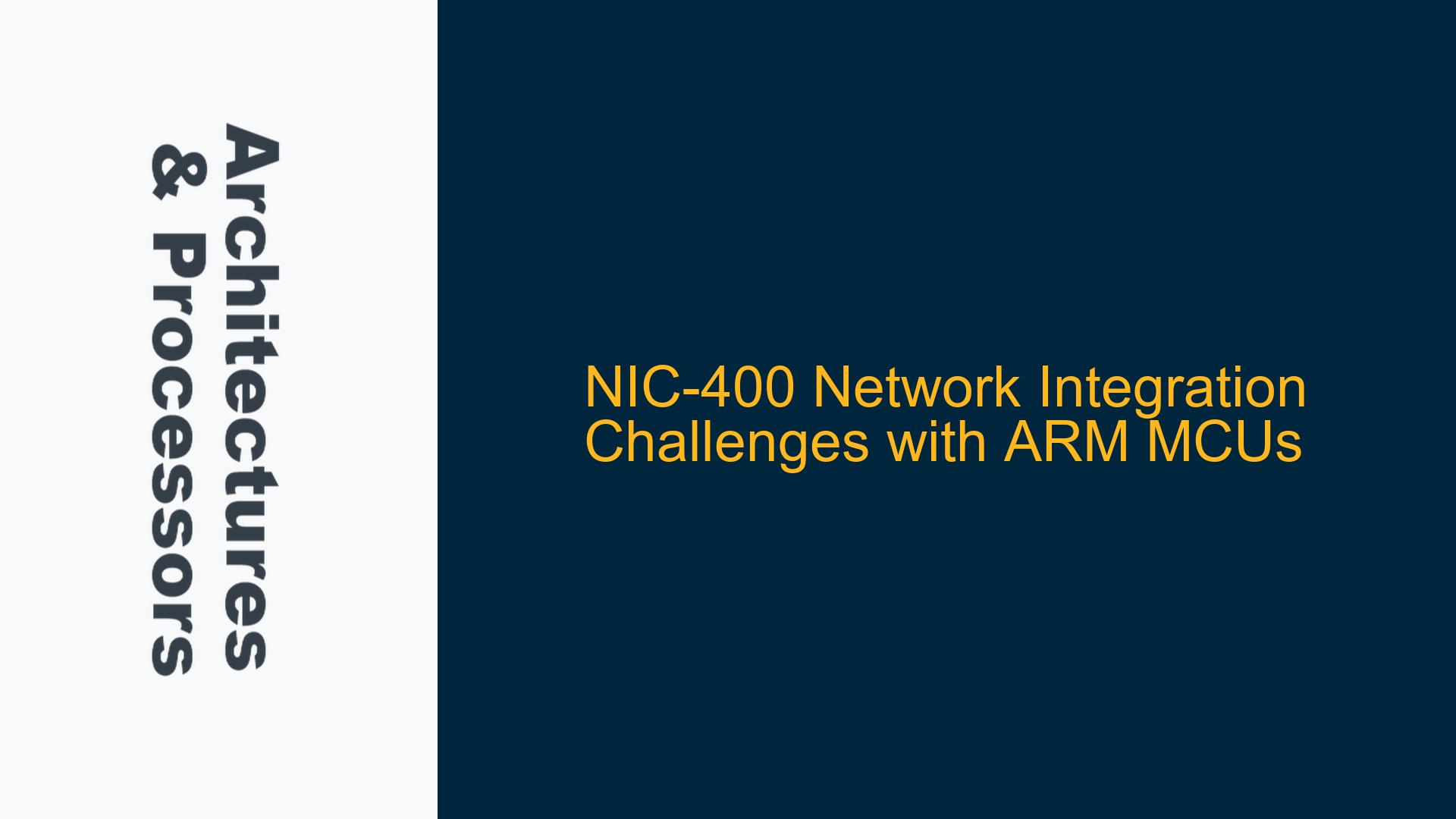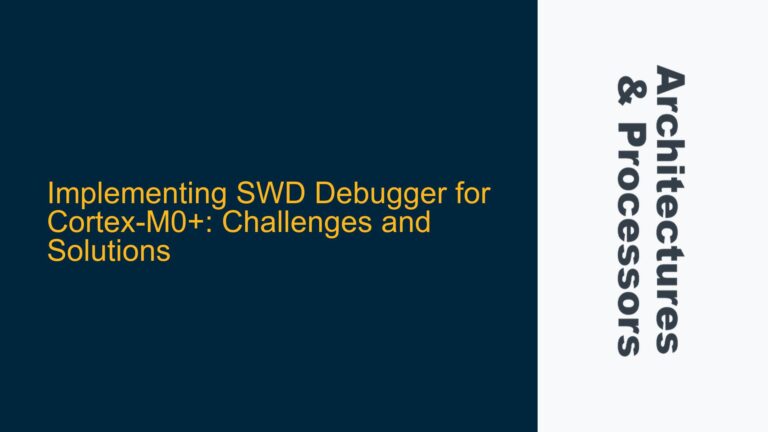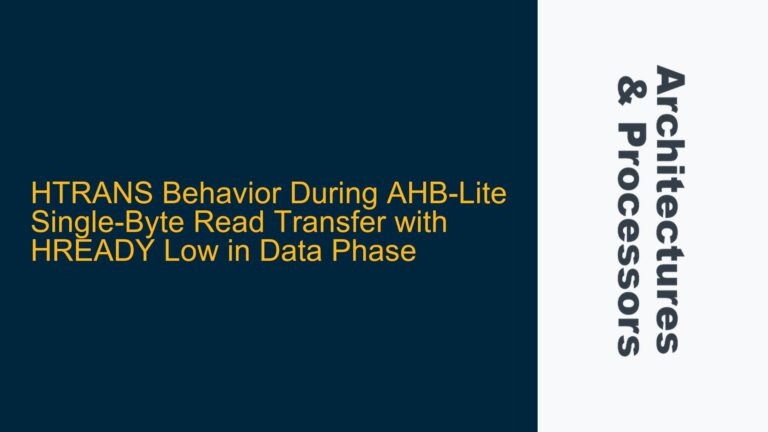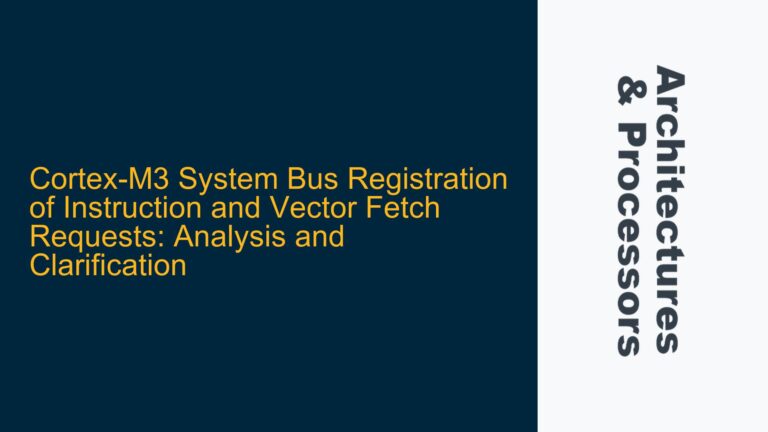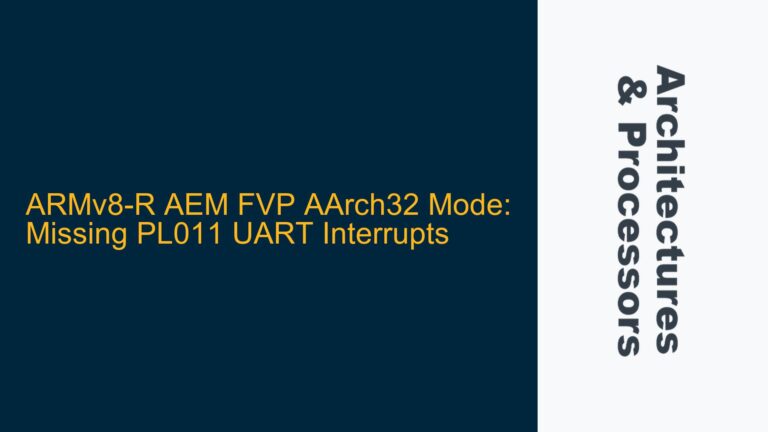NIC-400 Network Suitability for ARM MCU Integration
The integration of the NIC-400 network interconnect with ARM-based MCUs presents a unique set of challenges and considerations. The NIC-400, a highly configurable network interconnect from ARM, is designed to facilitate efficient communication between various components in a System-on-Chip (SoC). However, when integrating the NIC-400 with ARM MCUs, several factors must be meticulously evaluated to ensure optimal performance, power efficiency, and compatibility.
The NIC-400 network is renowned for its flexibility and scalability, making it a popular choice for complex SoC designs. It supports multiple protocols, including AXI, AHB, and APB, and can be tailored to meet specific performance and power requirements. However, the integration of NIC-400 with ARM MCUs, particularly those based on the Cortex-M series, requires a deep understanding of both the interconnect architecture and the MCU’s capabilities.
ARM MCUs, especially those in the Cortex-M series, are designed for low-power, real-time applications. They typically feature a simplified memory hierarchy and limited cache resources compared to high-performance Cortex-A series processors. This distinction is crucial when integrating the NIC-400, as the interconnect’s performance characteristics must align with the MCU’s operational constraints.
One of the primary concerns is the potential mismatch between the NIC-400’s high-performance capabilities and the MCU’s more modest processing power. The NIC-400 is capable of handling high-bandwidth data transfers and complex multi-master configurations, which may be underutilized or even detrimental in an MCU-based system. Therefore, it is essential to carefully configure the NIC-400 to match the MCU’s performance profile, ensuring that the interconnect does not introduce unnecessary latency or power consumption.
Another critical aspect is the compatibility of the NIC-400’s protocol support with the MCU’s bus interfaces. While the NIC-400 supports AXI, AHB, and APB, the specific implementation and configuration of these protocols must be aligned with the MCU’s requirements. For instance, the Cortex-M series typically uses AHB-Lite or APB for its bus interfaces, and the NIC-400 must be configured to support these protocols efficiently.
Furthermore, the integration of the NIC-400 with ARM MCUs must consider the system’s overall power management strategy. The NIC-400 offers various power-saving features, such as clock gating and power domain isolation, which can be leveraged to minimize power consumption in MCU-based systems. However, these features must be carefully configured to avoid introducing additional complexity or overhead that could negate their benefits.
In summary, the integration of the NIC-400 network with ARM MCUs requires a thorough understanding of both the interconnect’s capabilities and the MCU’s operational constraints. By carefully configuring the NIC-400 to match the MCU’s performance profile, ensuring protocol compatibility, and optimizing power management, designers can achieve a seamless and efficient integration that meets the system’s requirements.
Potential Mismatch Between NIC-400 Performance and MCU Capabilities
The integration of the NIC-400 network with ARM MCUs can lead to a potential mismatch between the interconnect’s high-performance capabilities and the MCU’s more limited processing power. This mismatch can manifest in several ways, including underutilization of the NIC-400’s features, increased latency, and unnecessary power consumption.
The NIC-400 is designed to handle high-bandwidth data transfers and complex multi-master configurations, making it suitable for high-performance SoCs. However, ARM MCUs, particularly those in the Cortex-M series, are optimized for low-power, real-time applications and typically feature a simplified memory hierarchy and limited cache resources. This disparity can result in the NIC-400’s capabilities being underutilized, leading to inefficiencies in the system.
One of the primary issues arising from this mismatch is increased latency. The NIC-400’s high-performance features, such as advanced arbitration schemes and multiple outstanding transactions, may introduce additional latency in an MCU-based system. This latency can be particularly problematic in real-time applications, where timely data processing is critical. Therefore, it is essential to configure the NIC-400 to minimize latency, ensuring that the interconnect’s performance characteristics align with the MCU’s requirements.
Another concern is the potential for unnecessary power consumption. The NIC-400 offers various power-saving features, such as clock gating and power domain isolation, which can be leveraged to minimize power consumption. However, if the NIC-400 is not configured appropriately, these features may not be fully utilized, leading to increased power consumption. This is particularly critical in MCU-based systems, where power efficiency is a key design consideration.
To address these issues, designers must carefully evaluate the NIC-400’s configuration options and tailor them to match the MCU’s performance profile. This may involve disabling certain high-performance features that are not required in an MCU-based system, optimizing the arbitration scheme to minimize latency, and leveraging the NIC-400’s power-saving features to reduce power consumption.
Additionally, designers should consider the system’s overall architecture and workload when configuring the NIC-400. For instance, if the MCU is primarily responsible for handling low-bandwidth, real-time tasks, the NIC-400 can be configured to prioritize low-latency communication over high-bandwidth data transfers. Conversely, if the MCU is expected to handle more complex tasks, the NIC-400 can be configured to support higher bandwidth and more sophisticated arbitration schemes.
In conclusion, the potential mismatch between the NIC-400’s high-performance capabilities and the MCU’s more limited processing power can lead to inefficiencies in the system. By carefully configuring the NIC-400 to match the MCU’s performance profile, designers can minimize latency, reduce power consumption, and ensure that the interconnect’s features are utilized effectively.
Optimizing NIC-400 Configuration for ARM MCU Integration
Optimizing the NIC-400 network for integration with ARM MCUs involves a series of strategic configuration steps to ensure that the interconnect’s performance characteristics align with the MCU’s operational constraints. This optimization process includes configuring the NIC-400’s protocol support, arbitration schemes, and power management features to match the MCU’s requirements.
Protocol Support Configuration
The NIC-400 supports multiple protocols, including AXI, AHB, and APB, which must be configured to align with the MCU’s bus interfaces. ARM MCUs, particularly those in the Cortex-M series, typically use AHB-Lite or APB for their bus interfaces. Therefore, the NIC-400 must be configured to support these protocols efficiently.
For AHB-Lite, the NIC-400 should be configured to handle single-cycle transactions and support the necessary control signals, such as HREADY, HRESP, and HTRANS. Additionally, the NIC-400’s address decoding logic should be optimized to minimize latency and ensure efficient data transfer between the MCU and other system components.
For APB, the NIC-400 should be configured to support the protocol’s simple, low-bandwidth communication requirements. This includes configuring the NIC-400’s APB interface to handle the necessary control signals, such as PSEL, PENABLE, and PREADY, and optimizing the address decoding logic to ensure efficient data transfer.
Arbitration Scheme Optimization
The NIC-400’s arbitration scheme plays a critical role in determining the interconnect’s performance characteristics. In an MCU-based system, the arbitration scheme should be optimized to minimize latency and ensure that the MCU’s real-time requirements are met.
One approach is to configure the NIC-400’s arbitration scheme to prioritize low-latency communication over high-bandwidth data transfers. This can be achieved by assigning higher priority to the MCU’s transactions and configuring the NIC-400’s arbitration logic to minimize contention between different masters.
Additionally, the NIC-400’s arbitration scheme should be configured to support the MCU’s specific workload requirements. For instance, if the MCU is primarily responsible for handling low-bandwidth, real-time tasks, the NIC-400’s arbitration scheme can be configured to prioritize these tasks over higher-bandwidth, non-real-time tasks.
Power Management Configuration
The NIC-400 offers various power-saving features, such as clock gating and power domain isolation, which can be leveraged to minimize power consumption in MCU-based systems. However, these features must be carefully configured to avoid introducing additional complexity or overhead that could negate their benefits.
Clock gating can be used to disable the NIC-400’s clock signals when the interconnect is idle, reducing dynamic power consumption. The NIC-400’s clock gating logic should be configured to ensure that the interconnect’s clock signals are only enabled when necessary, minimizing power consumption without introducing additional latency.
Power domain isolation can be used to isolate different power domains within the NIC-400, allowing unused portions of the interconnect to be powered down. The NIC-400’s power domain isolation logic should be configured to ensure that only the necessary portions of the interconnect are powered on, minimizing static power consumption.
System-Level Considerations
In addition to configuring the NIC-400’s protocol support, arbitration scheme, and power management features, designers should consider the system’s overall architecture and workload when optimizing the NIC-400 for ARM MCU integration.
For instance, if the MCU is expected to handle more complex tasks, the NIC-400 can be configured to support higher bandwidth and more sophisticated arbitration schemes. Conversely, if the MCU is primarily responsible for handling low-bandwidth, real-time tasks, the NIC-400 can be configured to prioritize low-latency communication over high-bandwidth data transfers.
Furthermore, designers should consider the system’s memory hierarchy and cache resources when configuring the NIC-400. The NIC-400’s memory interface should be optimized to ensure efficient data transfer between the MCU and the system’s memory components, minimizing latency and maximizing performance.
In conclusion, optimizing the NIC-400 network for integration with ARM MCUs involves a series of strategic configuration steps to ensure that the interconnect’s performance characteristics align with the MCU’s operational constraints. By carefully configuring the NIC-400’s protocol support, arbitration scheme, and power management features, designers can achieve a seamless and efficient integration that meets the system’s requirements.
